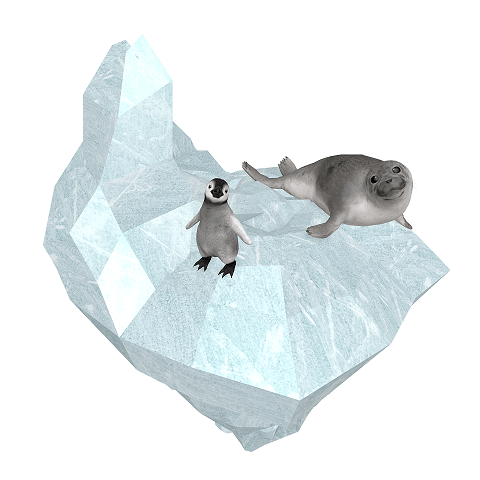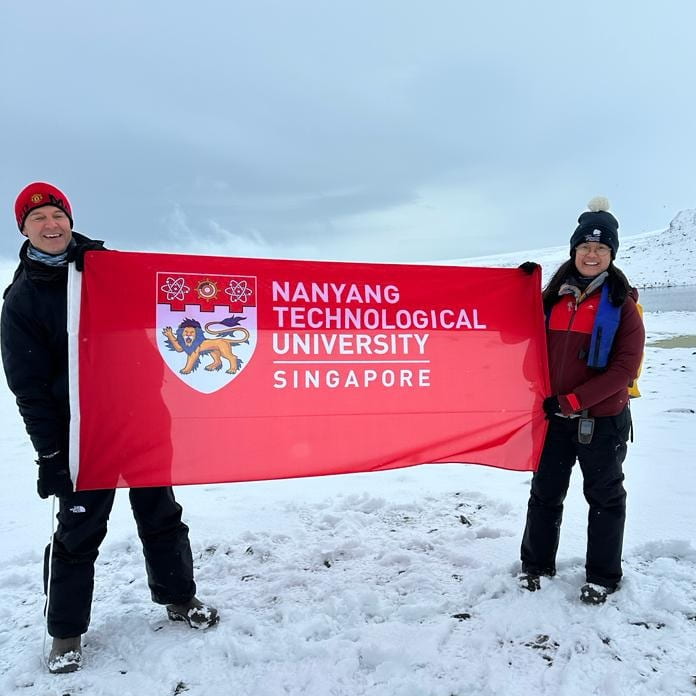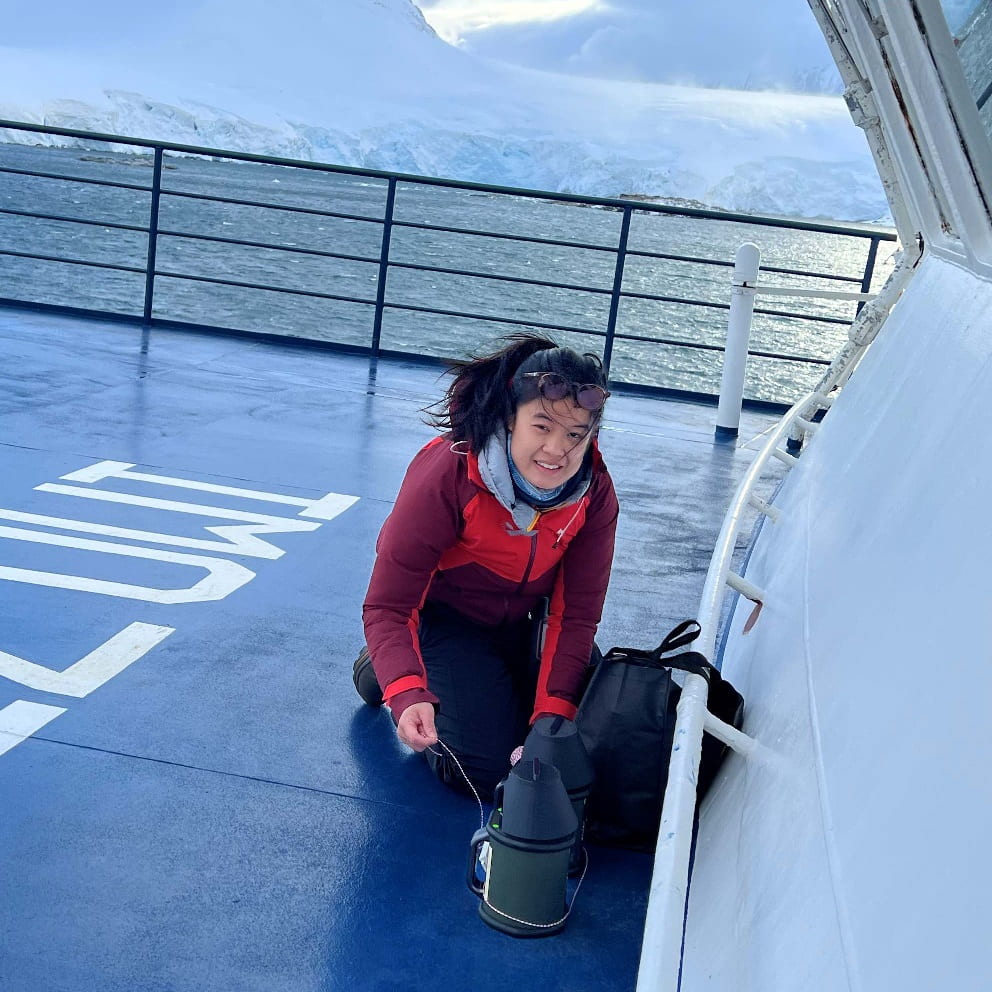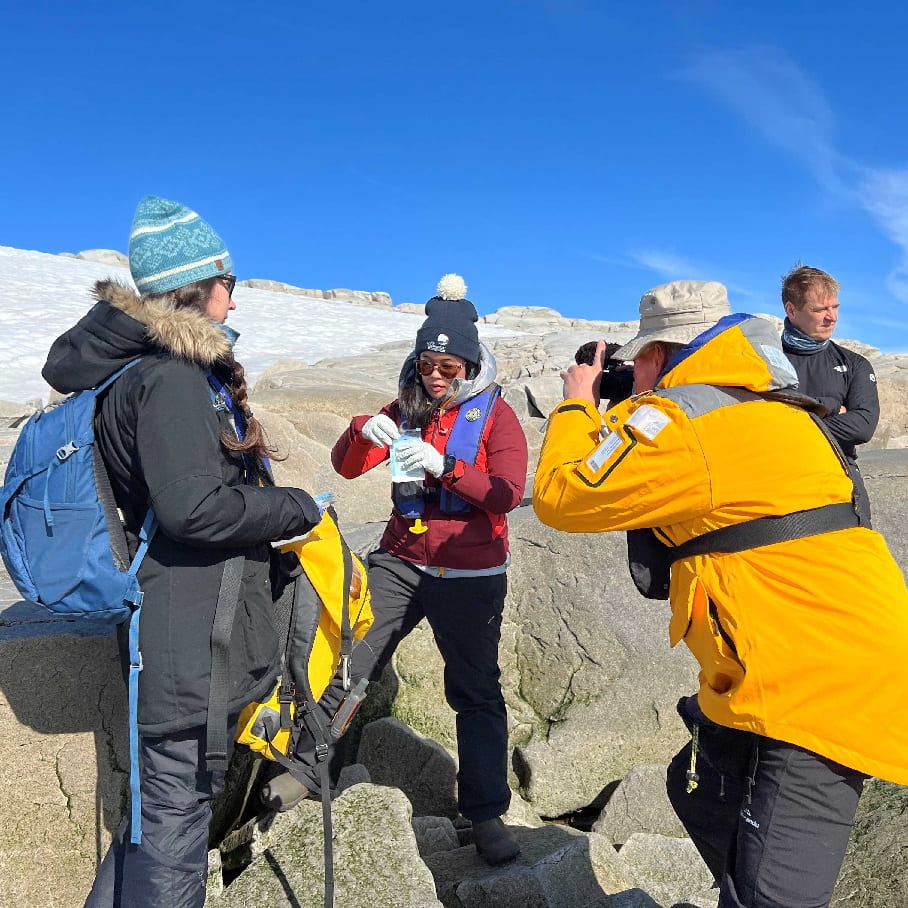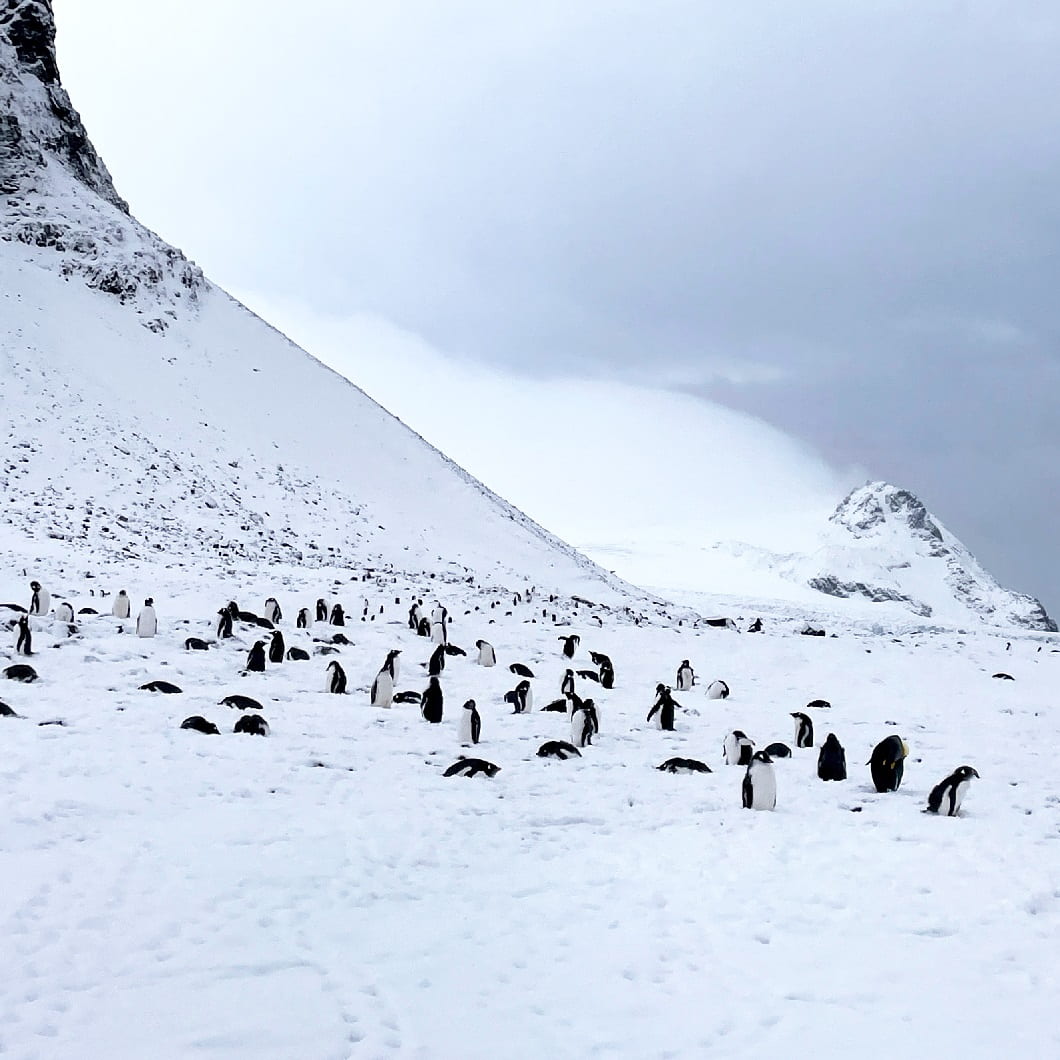The frozen continent may seem distant to most of us, yet what happens there has implications on coastal regions worldwide. PhD student Tan Fangyi reflects on her week-long expedition to the remote land in February
by Junn Loh

Climate scientist Tan Fangyi is no stranger to the wonders of nature. Navigating around rocky beaches and diving underwater are all in a day’s work for her.
But years of such outdoor escapades could not prepare the postdoctoral student for the landscape that greeted her in Antarctica.
“It took my breath away. I felt like I had landed on a whole different planet. All I could see around me was barren grey to greenish-grey bedrock,” Fangyi says.
The youngest member of an NTU expedition team, Fangyi was on a mission to study the effects of climate change. With a bag full of equipment for air sampling in tow, she braved fierce winds and frigid temperatures.
Fangyi (right) with Prof Benjamin Horton, Director of NTU’s Earth Observatory of Singapore, who led the research expedition.
Using a portable air sampling device to collect atmospheric samples from the cruise ship that she called home for seven days.
It was the first time NTU had sent researchers to the remote land to observe first-hand the melting Antarctic ice sheet, which is causing sea levels to rise.
From their lodging of a large cruise ship, they set out daily on a small inflatable dinghy to collect data on microorganisms in the air.
Recounting her trip, Fangyi says one indelible memory was the unblocked view of the pristine environment.
“The ice sheets look exactly like those we see in schematics in papers. The scale of it was phenomenal,” she says.
But as a geology student, Fangyi was also quick to notice worrying signs of the climate crisis. For example, she noticed heavily crevassed and fractured ice shelves, with the ice cliffs collaring their edges on the verge of collapse. The potential collapse of marine-based ice sheets in Antarctica poses uncertainties about future sea levels.
“The West Antarctic ice sheet alone has enough ice to raise sea levels by three to five metres, and that ice sheet is a lot bigger than what we saw in the Antarctic Peninsula,” Fangyi explains.
She adds: “Seeing the processes up close has left me with new perspectives and given me a renewed sense of purpose. Our research contributes to a better understanding of how the melting of ice sheets has impacted Singapore in the past, providing important context for future sea levels.”
Samples taken during the trip are now in NTU’s laboratories, where Fangyi and an interdisciplinary team of researchers are working to unravel the secrets of the frozen continent.
Investigating the air on land.
A penguin colony.
This story was published in the Mar-Apr 2023 issue of HEY!. To read it and other stories from this issue in print, click here.


